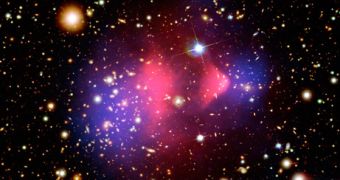A sample load of high-energy electrons collected from above Antarctica may provide hints of the existence of the mysterious dark matter or, as the theory goes, of an enigmatic celestial object, such as a pulsar or a microquasar that lurks in the astronomical vicinity of our planet's pole. After performing a series of tests, scientists are still undecided on the source of energetic protons, but are confident that further observations and research will help find an accurate answer.
Any of the versions will aid them in lifting the decades old veil of purely theoretical speculations. "In the first case, we have now seen for the first time a nearby source of cosmic rays. Nobody's seen that before," explained John Wefel, a physicist and study co-author from Baton Rouge's Louisiana State University, quoted by National Geographic. "In the second case, we may be seeing something even more stupendous."
The groups of electrons, protons or other kinds of subatomic particles that are known as cosmic rays have their origins in events like the explosions of dying stars (supernovae), but those which actually make it to the Earth are low in energy, as the high-energy ones fade out long before. This is why it's so strange that a bunch of them have been found so close to our planet. In order to get a better idea, experts launched a balloon which contained a particle collector dubbed the Advanced Thin Ionization Calorimeter (ATIC).
During the time spent aloft, the device recorded particle energies, charges, and trajectories, many of which, much to the specialists' surprise, featured a similar signal as the one dark matter destruction would provide. More specifically, they matched the mass of the Kaluza-Klein particle (550 to 650 gigaelectron volts) which is believed to be a component particle of dark matter.
The alternative implies the presence of a pulsar (the spinning ruin of a dead star) or a microquasar (the shiny and energetic material disk orbiting a tiny black hole). This gains somewhat more credit, given the recent discovery of two pulsars – Geminga and B0656+14 – by a team led by astrophysicist Okkie de Jager from the North-West University in Potchefstroom, South Africa. But the scientists don't rule out the possibility of the existence of a novel source.
"After all, pulsars were discovered only in 1967, and until 1992 we were blissfully unaware of microquasars," stated Yousaf Butt, an astrophysicist from the National Academy of Sciences. Such an object would have to reside at a distance of about 3,000 light years away from us in order to produce such effects. But further funding is needed in order to continue the study, as well as collateral research (such as the tests performed at the LHC in Geneva) in order to prove any of the options with more certainty.

 14 DAY TRIAL //
14 DAY TRIAL //